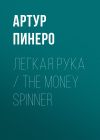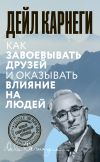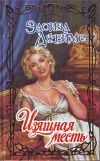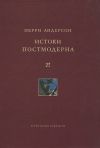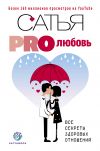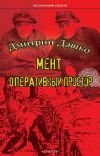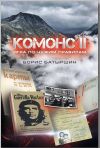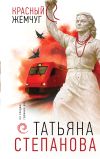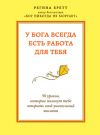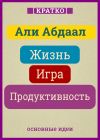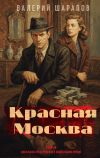Текст книги "Money, money circulation and credit"
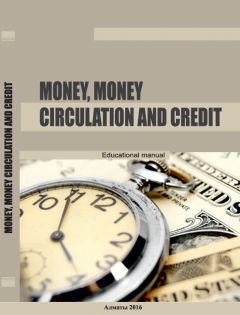
Автор книги: Коллектив авторов
Жанр: Учебная литература, Детские книги
сообщить о неприемлемом содержимом
Текущая страница: 2 (всего у книги 16 страниц) [доступный отрывок для чтения: 4 страниц]
The function of world money. It is a function of money used on the world market for international relations support. The world money performs three functions:
Of an international mean of purchase – money is used for the goods purchase and sale on the world money for cash;
Of an international mean of payment – money covers the international debts;
Of an international standby fund – money performs the role of an international mean of payment stock. The state gold reserve stock performs this function.
Historically the gold played role of the world money as an external account mean of control. The Paris agreement of 1867 declared only this metal. And such situation kept for quite a long time.
After the World War Ist some other national currencies of different countries joined the rank of world money – the US dollar, the British pound, the French franc. In 1922 it was formalized in legislation by the international agreement in Genoa when the British pound and the US dollar were announced as the equivalents of gold and introduced into the international circulation.
After the World War IInd the leaders of the biggest states tried to avoid the mistakes which lead to the World crisis of 30th. On July 1944 in Bretton Woods they created the system of stable exchange rates which was called a «Bretton Woods system».
The member governments of the International Monetary Fund which was created on the same international conference along with the International Bank for Reconstruction and Development fixed their currencies rates in dollars and gold, and the dollar from its side was linked to gold (35 dollars for 1 ounce of gold).
Thanks to the fact when for long years USA purchased and sold gold, i.e. created or destroyed dollars the price of gold became stable on the level of 35 dollars and almost eliminate the inflation. Dollar’s credibility and American economic monetary policy stability were incredible moreover the foreign exchange banks at any time could change their dollars on gold.
During the «Bretton Woods system» action the World economy and World trade quicksteped to new peaks. Simultaneously the inflation index kept steady state (about 3 %). Only slight deflections were observed in most of the countries. However this system was fraught with some danger. Because the industrial productivity in USA in 1969-1970 was lower than European and Japan, the American goods’ competiveness on the World market fell. The dollar exchange rate revaluation was unavoidable. To save the system of stable foreign exchange rates was impossible. The sharp floating because of instability in dollar led to the «flight of the dollar» and its following fall in exchange. The dollar stayed a leading currency. And on April, 1972 the «Common Market» Nations came to a decision to establish between themselves more narrow range limits of their currencies and for this purpose created a so called «monetary snake».
In order to decide the problem of an international liquidity the International Monetary Fund constituted the special drawing rights (SDR). Initially in 1970 for one SDR a fixed gold content was hardly as for US dollar – 0.888671 g of pure gold. On Decenber, 1971 one more attempt was tried in order to stabilize the foreign exchange rates. The US dollar was devalued in relation to gold: from 35 U.S. dollar an ounce to 38 U.S. dollar an ounce.
On February, 1973 the US dollar was devalued for the second time and an exchange market should be closed for several weeks. In this regard most of the countries came to the system of floating rates. However after two devaluations of the US dollar and the «floating» foreign exchange rates introduction from July 1st 1974 the SDR unit value began to be determined on the basis of «currency basket:, i.e. the average weighted foreign exchange rate of the 16 leading capitalist countries the share of external trade of which constituted not less than 1 % of the world trade quantum.
From January 1st, 1981 the quantity of currencies in the «currency basket» was decreased to five after what its content is subject to review every five years. However the countries of EES were not satisfied with the SDR system functioning and its close link with the US dollar.
From March 13th, 1979 the European Monetary System began to function which consisted of 8 countries of the «Common Market» (Germany, France, Benelux, Italy, Ireland, Denmark). For the European Monetary System member countries a European Currency Unit ECU was introduced.
ECU is a paperless monetary unit in a type of account record in the member countries’ central banks. The value of ECU is determined on the basis of the average weighted exchange rate of these 12 governments. In order to determine a share ofthis or those currency in ECU the GNP (gross national products) of the member countries were matched.
A new stage of the West European integration development was the program of the currency and economic union creation which was established by Jacques Delors’s committee in April, 1989. Delors’s plan stipulated the creation of the Common Market, the EU competition motivation, the coordination of economy, budget and tax policies in order to control the inflation, to stabilize the prices and economy growth, the general government deficit minimisation and the cover methods improvement. On the basis of Delors’s plan to December, 1991 the Maastricht Treaty about the European Union was worked out which stipulated a stagewise formation of a currency economic union.
The first stage actually began in July, 1990 simultaniously with the total currency restrictions abolition regarding the capital flow to EU. The second started in January, 1994 with the beginning of the European Monetary Institute in Frankfurt on the Main consisting of the Central banks managing member countries. The purpose of the European Monetary Institute creation was the preparation for the European System of Central Banks organization and ECU banknote issue. The European Council laid on December, 1995 in Madrid confirmed the decision of the Common European Currency introduction from January, 1999 what became the third concluding stage.
The Council participants decided to refuse the name of «ECU» admitting EURO instead. As envisioned by the Council euro shouldn’t be a parallel national currency like it was ECU but it should become a single and common currency precisely for all the EU members which finally will replace marks, pounds and francs.
The technical transfer stipulated four stages. Till May, 1998 the European Union should decide what countries will constitute the monetary union. Australia, Belgium, Finland, France, Germany, Ireland, Luxembourg, Netherlands, Italy, Portugal and Spain were included into the first list. The Great Britain and the rest Scandinavian countries joint at the later stage. This group of the 11 above mentioned countries forms the market with the GDP of 6.5 billion USD and with the population more than 280 million people. For comparison: The US GDP is 6.955 billion USD with the population of 263 million people.
On the second stage which began on January 1st, 1999 the fixed exchange rates were identified. The European Monetary Institute transformed into the European Central Bank. Beginning from the above date the monetary markets quote in euro which became the basic currency in the interbank payments. The correspondent banks chose their euro-clearing bank and set up the euro-accounts. The private individuals could hold euro for their bank accounts and make bank payments by means of this currency but still the banknotes and coins haven’t been issued for circulation.
On the third stage beginning from January 1st, 2002 the euronotes and coins were put in circulation. Euro became the second lawful currency after the national as on streets as in shopping centers.
On the last stage six months ago the national currencies lost their lawfulness as a mean of payment but for some time banks exchanged them on euro. To July, 2002 euro become the only currency unit in the European Union. The emission and control of cash euro circulation were entrusted on the European Central Bank.
The function of world money is performed by the modern money but at limits. First of all nowadays it is not performed by all the money. For the second even those currencies (for example US dollars, euro, yens) which are actively used today in the international relations are not universal either and they don’t cover all the system of the World money circulation.
All the listed functions were fully performed by money in the condition of the gold standard, i.e. when the role of the total equivalent was played by gold. The suspension of gold standard led to the fact that money stopped to perform their two traditional functions (treasures and world money) which couldn’t be performed without gold in the quality of money. That’s why in the modem conditions the economic literature often indicates only three functions of money: standard of value, instrument of circulation and mean of payment though this is a debatable opinion.
A consideration must be given to that actually in performing by the modern money its functions the fundamental changes took place but it doesn’t mean that two of five functions do not exist at all.
The function of treasures forming actually transforms into the function of value store when money is considered as a special liquid asset which saves after the good sale and provides its owner with a purchasing power in future.
Reviewing the initial analysis results of the money functions we can determine their interaction and also pay attention that the function of instrument of circulation and payment should determine the level of the total monetary stock in the country and the function of saving is directly linked with the State monetary policy.
The basic requirement of the money functions performing is the stability of the money circulation whole system.
The comprehension questions
1. Name two basic theories of money origin in the World Economy.
2. What are the basic history stages of money development according to the evolutional theory?
3. List the money functions and elaborate the concepts.
4. The essence of money consists of three features, name them.
Section 2. MONEY TURNOVER, MONEY CIRCULATION AND MONEY SYSTEM
1.2.1. Metal full-bodied moneyIn the course of historical development initially the system of metal money circulation formed which was based on the metal money usage.
The money qualification which is based on the materially substantial features of the total equivalent allows classifying conventionally the metal money on full-bodied and token money.
The full-bodied (real) money is money the nominal (designated on it) value of which corresponds to its real value, i.e. to the value of metal of which it is produced (an obverse of a coin – adverse, a reverse of a coin – reverse, a ridge – edge).
The first coins appeared in about the XIIth century B.C.E. in China and in the VIIth century B.C.E. in the ancient Lydian State (the Asia Minor). The oldest money which were discovered on the territory of Kazakhstan are the ancient coins found during the diggings of such towns as Otrar, Taraz, Turkestan, Balasagun, Suyab. The earliest are dated from the VIth century. Before the XXIInd century they were produced manually from copper, bronze, gold. As a rule the coins had the images of a family coat of arms – tamga and indicated the title of the main sovereign ruler – kagan. At that times each of them issued their own coins with their title that’s why they greatly differed from each other not only by the images but also by their thickness and form.
Later in the middle centuries in Kypchakiya the territory of which marched with the territory of modern Kazakhstan a silver tanga and a copper poul circulated. The copper coins usually were used for everyday buyings and silver for the foreign trade operations.
After Kazakhstan joint to Russia in the beginning of the XVIIIth century little by little the Russian coins and monetary units began to circulate in our country. In the pre-revolution Kazakhstan during the monetary reform of 1895-1897 the system of gold monometallism was established with the gold-coin circulation.
The gold, silver and copper coins were used in circulation. The basic type of the monetary units was the State Bank credit notes which on 92 % were ensured by gold. The basic part of the monetary stock consisted of the nominal instruments of circulation which could be freely exchanged on the full-bodied money – gold coins and thus they had the population’s credibility.
Having an inmost value the full-bodied money depends on neither the other types of wealths nor the market conditions in which it circulates. All the types of commodity money belong to the full-bodied money – gold and silver coins.
The token money (the substitute of real money) is money the nominal value of which is higher than real, i.e. its purchasing power exceeds the intrinsic value of the commodity which plays role of the monetary relations bearer. The purchasing power of this money is determined by the market conditions exceptionally whereby the inmost value of token money doesn’t influence on it. The token money includes all the types of paper money, credit notes and metal symbols of value (billion coins – small coins manufactured from copper and aluminum).
In the course of historical development first of all the system of metal circulation formed which was based on the metal coins usage.
Initially (in particular in the XVIth-XVIIIth centuries) the system of bimetallism existed.
Bimetallism is the system where the role of the total equivalent is played by two metals – gold and silver. It means that these two metals circulated on equal basis and had a fixed correlation.
The unlimited circulation, free issue and two prices determination on one good are supposed. This system existed in the XVIth-XVIIIth centuries and in some countries of West Europe even in the XIXth century. However such system didn’t provide the stability of money circulation.
There are three systems of bimetallism:
Of the parallel currency where the correlation between the gold and silver coins is spontaneous.
Of the double currency where the government fixed the correlation between metals and the gold and silver coins issue and their popularity were made by this correlation.
Of the limping currency where the gold and silver coins were the legal means of payment but with unequal terms. For example if the silver coins issue was made privately thus practically they played role of the gold symbols.
In the result of silver production cheapening in the end of the XIXth century and its devaluation the gold coins began to go out of circulation to treasures, i.e. «bad money drives out good».
In the XIXth century the system of bimetallism was replaced by monometallism which was based on only one metal, i.e. only one metal plays role of the total equivalent. The silver monometalism existed in Russia (1843-1852), in India (1852-1893) and in China (till 1935).
The gold coin standard most closely met the requirements of capitalism of the free competition period, promoted the development of production, credit system, world trade and capital export. Sometimes the age of gold coin standard is associated with the fast industrialization and economic prosperity.
Since the First World War little by little gold was drove out of circulation by paper money and credit notes; the process of gold demonetization began which subsequently captured the international circulation.
First of all gold stopped performing the function of the instrument of circulation and payment in the domestic circulation and then in 1976 the function of the world money. For the detailed information look through the chapter «The international currency and credit rela– tions».
As can be seen from the above the system of metal money circulation became a thing of the past. Nowadays the fractional coins are minted from different alloys and aluminum.
1.2.2. Paper money and their circulation consistencyPaper money is relatively new for the world of money. The paper monetary units are token money, only symbols. Usually they appeared in the periods of acute state needs during the wars and revolutions when the other sources of financing (taxes, lendings, etc.) ran out. One more reason of the paper money issue was a chronic deficit of an external state account, in order to avoid the gold drain abroad the government was forced to implement the inconvertible to gold money provided with a forced rate of exchange.
For the first time it was issued in the VIIth century in China in the form of large denominations in order to replace the inconvenient fullbodied copper coins. And while the notes could be freely exchanged onto the full-bodied they were popular in circulation. Later in the XIIIth century paper money was issued in Persia and in the XIVth century in Japan.
However in other countries the substitutes of «real money», i.e. coins were widely spread. Their nominal was verified with the sovereign’s stamp or a sign and a personal stamp of a merchant or a banker. Initially in the form of complementary means of exchange the deposit receipts of stocked items, taxes payments, loans granting were used. Their circulation increased the trade opportunities but at the same time frequently complicated the exchange of these paper duplicates onto the metal coins.
Among the west countries the first who began to issue paper money were the North American States. In 1690 such monetary units were issued in Massachusetts State.
In Europe the first who decided to adopt the American practices was France: in 1716-1720 the famous economist and banker John Law (1671-1629) began to print the notes of the Royal Bank. Hereafter when the world economy followed the way paved by John Law and began to create the central banks he was granted with an exclusive right of the banknotes issue.
On the territory of Kazakhstan the paper monetary units appeared in the end of the XVIIIth century and mainly these were the Russian monetary units.
In Russia the emission of paper money – assignats for the first time began in 1769 r. It was supposed that like in other countries who risked implementing paper money they could be freely exchanged onto silver or gold on request. But all turned otherwise. To the end of the century already the excesses of assignats forced to freeze the exchange, in the nature of things the rate of assignated ruble began to fall and the prices of goods increase.
Money separated on «bad» and «good». According to the law of Thomas Graham bad money drives out good: the money commercial value of which rises in respect to bad money and official exchange rate disappears from the circulation. It simply «put by» at homes and bank safes.
In the XXth century the performers of the «bad» money role were the banknotes which drove out of circulation gold. Since the First World War the tendency for the banknotes exchange on gold termination became a frequent practice. Whereupon the bank bills became almost undistinguishable from the treasury notes – the second type of paper money. The Central Bank faced the matter of the money circulation unfaltering watch. Actually paper money itself doesn’t have any useful value.
Paper money is a sign, symbol of value. How come the refusal of gold happened which became so widespread and settled subsequently? The simplest explanation is that paper money is convenient in circulation and easy for transportation. It is useful to remember the words of the famous Englishman – Adam Smith who said that paper money should be considered in the quality of the cheaper instrument of circulation.
Actually during the circulation the coins abrade and a part of precious metal disappears. Besides growths the demand of gold in industry, medicine and among supplies. And the main the goods circulation on a scale of trillions of US dollars, tenge, franks and other monetary units is impossible to cover by gold.
A transfer to a fiduciary circulation sharply widened the commodity exchange limits. Paper money – banknotes and treasury notes – are obligatory for acceptance in the quality of a payment mean on the territory of the State. Its value is determined only by the quantity of goods and services which could be purchased on it.
Thus the XXth century is marked by a transfer to a paper money circulation and gold and silver conversion into the commodity which could be purchased at a market price.
Paper money should be understood as a monetary unit which is issued directly or indirectly by the Treasury Department for the budget requirements and provided with a compulsory purchasing power. They include the treasure notes, different types of substitutes (government bills, government bonds, some kinds of consolidated stocks and token money).
Paper money is a monetary unit inconvertible on metal supplied with a compulsory nominal and issued by government to cover its expenses.
Modern money is a social phenomenon appointed by the governmental authorities. Its color, size and artistic features are not important for buyers and sellers. A trust to money is determined by a trust to a credibility of some or another governmental authority. The society represented by the government can easily appoint the other in form and images paper or plastic notes to perform the functions of money and the individuals will use them as money to cover their needs. That’s why nowadays money is called fiat money».
The government keeps control of the circulation emission of currency. If the money issue was unlimited or could be done by everyone thus the prices would grow sharply, money would devaluate and wouldn’t be used. The society would return to an exchange in kind.
Paper money is unstable in itself, i.e. as a rule it devaluates because it is issued for the budget deficit coverage. It is not exchanged on gold and does not have its own inmost value thus the mechanism of spare money withdrawal from circulation the «mechanism of trea– sure» does not work here. Consequently paper money issued above the norm is stuck in the channels of circulation and devaluates. The depreciation of money is an exchange of one paper monetary unit purchasing power (but not all the paper monetary stock).
There are two forms of the monetary depreciation:
Internal is a depreciation in respect to the goods on domestic market, i.e. the increase of prices;
External is a depreciation of money in respect to the foreign currency, i.e. an exchange fall (drop) of the national currency.
